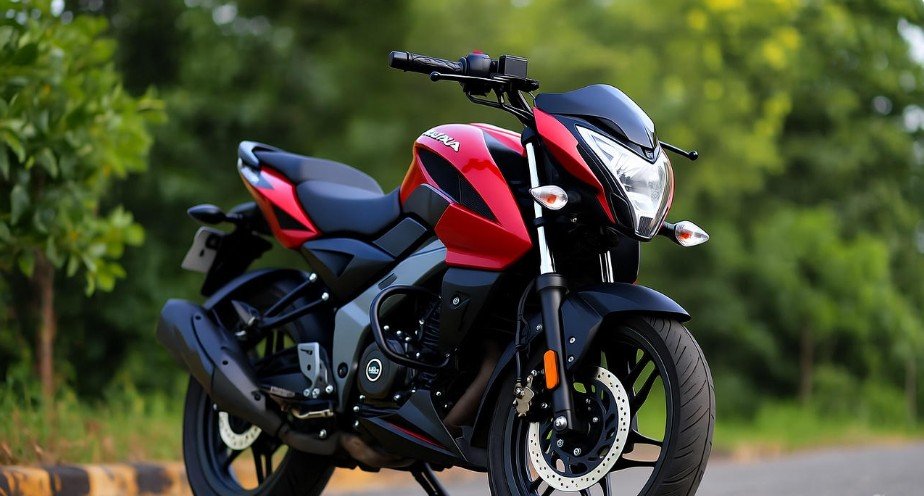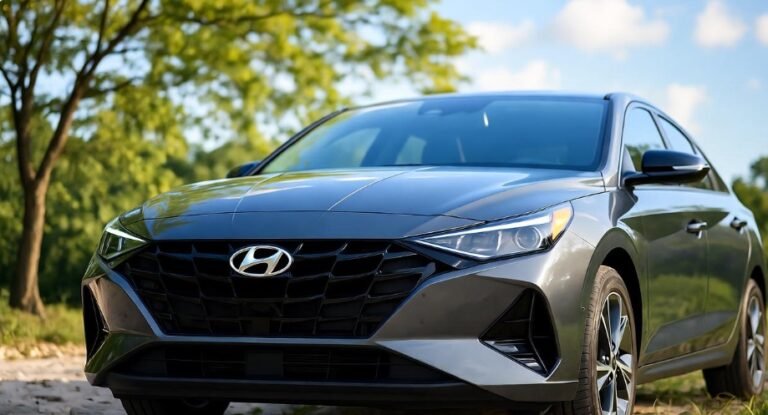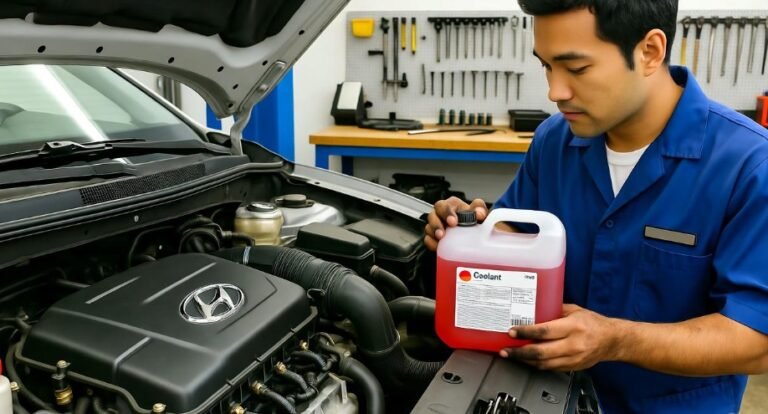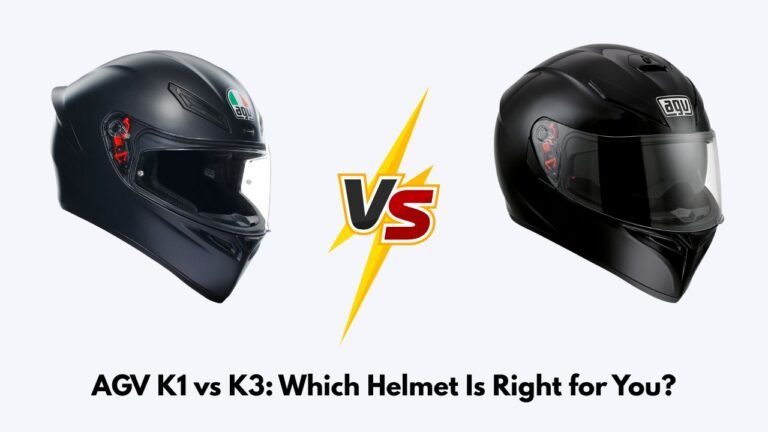Bajaj Pulsar 150 Disc Brake Price

The Bajaj Pulsar 150 Disc Brake price varies by location and specific variant, but expect it to be competitively priced, offering excellent value for a performance-oriented 150cc motorcycle with reliable disc braking.
Key Takeaways
- Discover current Bajaj Pulsar 150 Disc Brake prices.
- Understand factors influencing the Pulsar 150 disc brake cost.
- Explore key features of the Pulsar 150 with disc brakes.
- Learn about the benefits of disc brakes for riders.
- Find tips for getting the best Pulsar 150 disc brake deal.
Are you looking to buy a Bajaj Pulsar 150 and wondering about the specific price for models equipped with disc brakes? The Bajaj Pulsar 150 is a popular choice in the 150cc segment, known for its sporty design and capable performance. When it comes to safety and braking efficiency, many riders prioritize models with disc brakes. However, the exact Bajaj Pulsar 150 disc brake price can be a bit tricky to pin down due to variations. This guide will break down everything you need to know about the cost, features, and considerations for purchasing a Bajaj Pulsar 150 with disc brakes, making your decision easier.
Understanding the Bajaj Pulsar 150 Disc Brake Price Landscape
The Bajaj Pulsar 150 has long been a staple in the Indian motorcycle market, celebrated for its blend of performance, style, and affordability. When discussing the Bajaj Pulsar 150 disc brake price, it’s important to understand that this motorcycle is often available in different configurations, with the presence of disc brakes typically influencing the final cost. As a rider, you’re investing in not just transportation, but also in a machine that offers an engaging riding experience, and good brakes are paramount for that experience.
In the United States, while Bajaj motorcycles are not as ubiquitous as some domestic brands, their presence is growing, particularly among enthusiasts seeking reliable and performance-driven options. The Pulsar 150, with its sporty appeal and robust engineering, presents an attractive proposition. The inclusion of disc brakes, especially on the front wheel, is a significant upgrade over drum brakes, offering superior stopping power and better heat dissipation, which is crucial for consistent performance during rides.
When you search for “Bajaj Pulsar 150 disc brake price,” you’ll find that it generally sits at the higher end of the Pulsar 150 spectrum, reflecting the technological advancement and enhanced safety features it offers. This price difference is a worthwhile investment for many riders who prioritize safety and a more responsive braking system. This article aims to provide a clear picture of what to expect, helping you navigate the market and make an informed purchase.
Factors Influencing the Bajaj Pulsar 150 Disc Brake Cost
The price of any vehicle, including the Bajaj Pulsar 150 with disc brakes, is rarely a fixed number. Several factors contribute to the variations you might encounter when looking for the Bajaj Pulsar 150 disc brake price. Understanding these elements will help you gauge the market better and potentially find the most favorable deal.
Variant and Specifications
Bajaj often releases its popular models in different variants. For the Pulsar 150, this can mean differences in engine tuning, cosmetic enhancements, and importantly, braking systems. A model featuring a front disc brake will naturally be priced higher than one with a front drum brake. Some top-tier variants might even offer dual-disc setups (front and rear), further influencing the Bajaj Pulsar 150 disc brake price upward.
Geographical Location
The price of motorcycles can vary significantly depending on the country, state, or even city. Factors like local taxes, import duties (if applicable for the US market), logistics costs, and dealer margins all play a role. The Bajaj Pulsar 150 disc brake price in one region might differ from another due to these local economic conditions.
On-Road vs. Ex-Showroom Price
It’s crucial to distinguish between the ex-showroom price and the on-road price. The ex-showroom price is the manufacturer’s listed price before taxes and other charges. The on-road price, which is what you actually pay, includes the ex-showroom price plus RTO (Regional Transport Office) charges, insurance premiums, GST (Goods and Services Tax), and any dealer-specific accessories or handling fees. Always clarify which price is being quoted when discussing the Bajaj Pulsar 150 disc brake price.
Current Market Demand and Offers
Like any consumer product, market demand influences pricing. If the Bajaj Pulsar 150 is in high demand in a particular area, dealers might have less flexibility on pricing. Conversely, during festive seasons or promotional periods, manufacturers and dealers often offer discounts, special finance schemes, or bundled accessories, which can effectively lower the Bajaj Pulsar 150 disc brake price you pay.
Model Year and Production Batch
Older model year bikes might be sold at a discount to clear inventory, especially when a new model year with updated features is released. While the core specifications of the Pulsar 150 are consistent, minor updates or cosmetic changes across model years can also affect pricing. Ensure you are aware of the model year when negotiating the Bajaj Pulsar 150 disc brake price.
Key Features of the Bajaj Pulsar 150 with Disc Brakes
The Bajaj Pulsar 150 is more than just its braking system; it’s a package designed to deliver a thrilling and reliable riding experience. When you opt for a variant with disc brakes, you’re enhancing an already capable machine. Let’s delve into some of the standout features:
Engine and Performance
At its heart, the Pulsar 150 typically features a 149.5cc, single-cylinder, DTS-i engine. This engine is known for its smooth power delivery and respectable performance for its class. It usually offers good fuel efficiency, making it a practical choice for daily commutes as well as occasional longer rides. The power output is tuned to provide a balance between city maneuverability and highway cruising capabilities.
Suspension System
The motorcycle usually comes equipped with telescopic front forks and a rear monoshock suspension. This setup is designed to absorb road imperfections effectively, providing a comfortable ride even on uneven surfaces. The monoshock rear suspension, in particular, contributes to better handling and stability, especially when cornering or carrying a pillion rider.
Design and Aesthetics
Bajaj has consistently updated the Pulsar 150’s design to keep it modern and appealing. It often features muscular fuel tanks, sharp body graphics, a halogen headlamp with an LED DRL (Daytime Running Light), and a sleek tail lamp. The digital-analogue instrument cluster provides essential riding information at a glance. The overall design language is sporty and aggressive, giving it a ‘bigger bike’ feel.
Braking System (Focus on Disc Brakes)
The defining feature we’re discussing is the disc brake, typically found on the front wheel. A front disc brake, usually 240mm or 260mm depending on the variant and year, offers superior stopping power compared to a drum brake. It provides better modulation, meaning you have more control over the braking force applied. This translates to shorter stopping distances and greater confidence for the rider, especially in emergency situations or during spirited riding. Some higher-end variants might offer a rear disc brake as well, further enhancing the braking performance and contributing to the overall Bajaj Pulsar 150 disc brake price.
Wheels and Tires
The Pulsar 150 usually rides on alloy wheels, which are lighter and more durable than spoke wheels. These alloys are often fitted with tubeless tires. Tubeless tires offer a significant advantage: in case of a puncture, they tend to deflate slowly, giving the rider more time to react and find a safe place to stop. They also reduce the risk of sudden deflation, improving safety.
Benefits of Disc Brakes on the Bajaj Pulsar 150
Choosing a Bajaj Pulsar 150 with disc brakes isn’t just about paying a slightly higher Bajaj Pulsar 150 disc brake price; it’s about investing in tangible benefits that enhance your riding experience and safety. Here’s why disc brakes are a superior choice for many riders:
- Superior Stopping Power: Disc brakes provide significantly more bite and require less force at the lever compared to drum brakes. This allows for quicker and more effective deceleration.
- Better Heat Dissipation: During braking, friction generates heat. Disc brakes, with their exposed rotor, dissipate this heat more efficiently than enclosed drum brakes. This prevents brake fade, which is the reduction in braking performance due to overheating, ensuring consistent braking even after repeated stops.
- Improved Wet Weather Performance: Disc brakes tend to perform better in wet conditions. Water is flung off the rotor by centrifugal force, allowing the brake pads to make better contact with the disc surface, thus maintaining braking effectiveness. Drum brakes can trap water, reducing their efficiency.
- Enhanced Modulation and Control: The lever feel with disc brakes is generally more progressive and predictable. Riders can more finely control the amount of braking force applied, leading to smoother stops and better handling during braking.
- Reduced Maintenance (in some aspects): While both systems require maintenance, disc brake pads are typically easier and quicker to replace than drum brake shoes. The components are more accessible.
- Aesthetics: Many riders find the look of a disc brake rotor and caliper to be sportier and more appealing than a drum brake hub.
These advantages mean that even with a slightly higher Bajaj Pulsar 150 disc brake price, the investment pays off in terms of safety, control, and confidence on the road.
Bajaj Pulsar 150 Disc Brake Price: A Comparative Look
To give you a clearer picture of the Bajaj Pulsar 150 disc brake price, let’s consider a hypothetical scenario. Please note that these are illustrative figures and actual prices will vary based on the factors mentioned earlier. For the most accurate pricing, it’s always best to consult local dealerships or official Bajaj websites.
Imagine two variants of the Bajaj Pulsar 150 available in your region:
| Variant | Braking System | Estimated Ex-Showroom Price (USD) | Approximate On-Road Price (USD) |
|---|---|---|---|
| Bajaj Pulsar 150 (Standard) | Front Drum, Rear Drum | $1,500 | $1,750 |
| Bajaj Pulsar 150 (Disc Brake Variant) | Front Disc, Rear Drum | $1,650 | $1,950 |
| Bajaj Pulsar 150 (Twin Disc Variant – if available) | Front Disc, Rear Disc | $1,750 | $2,100 |
As you can see from the table, the variant with a front disc brake commands a higher Bajaj Pulsar 150 disc brake price, typically around $150-$200 more at the ex-showroom level compared to the standard drum brake version. The twin-disc variant, if offered, would be priced even higher. The on-road price difference will also reflect this increase, plus any additional taxes or insurance that might be marginally higher for the better-equipped model.
When researching, you might find slight variations between these figures. For instance, a dealer might offer a special promotion, bringing down the effective Bajaj Pulsar 150 disc brake price for a limited time. It’s always wise to get quotes from multiple dealerships to compare and negotiate.
How to Find the Best Bajaj Pulsar 150 Disc Brake Deal
Securing the best Bajaj Pulsar 150 disc brake price involves a combination of research, timing, and negotiation. Here’s a step-by-step approach:
- Identify Authorized Dealerships: Start by locating authorized Bajaj dealerships in your area. You can usually find a dealer locator on the official Bajaj Auto website or through online searches.
- Check Official Websites and Brochures: Browse the official Bajaj Auto website for the latest specifications and any announced pricing or offers. Download the brochure for the specific Pulsar 150 variant you are interested in.
- Gather Price Quotes: Contact at least 2-3 dealerships directly. Ask specifically for the on-road price of the Bajaj Pulsar 150 model with disc brakes. Be clear about the variant you want.
- Inquire About Discounts and Offers: Ask about any ongoing discounts, festive offers, exchange bonuses, or special finance schemes. Sometimes, dealers bundle accessories like helmets or anti-theft devices, which can add value.
- Negotiate the Price: Once you have a few quotes, you can use them to negotiate. If one dealer offers a lower price, see if another can match or beat it. Don’t be afraid to negotiate, especially on the accessory costs or insurance premiums.
- Consider the Timing: Buying at the end of the financial year (typically March in India, or consult local US financial calendars for import cycles) or during major festive seasons can sometimes yield better deals as dealers try to meet sales targets.
- Read Reviews and Forums: Look for online reviews or discussions on motorcycle forums where owners share their experiences regarding pricing and deals. This can provide valuable insights.
- Understand the Total Cost: Beyond the Bajaj Pulsar 150 disc brake price, factor in insurance costs, RTO registration, and any potential maintenance packages. A slightly higher purchase price might be offset by lower insurance premiums on a more expensive variant, for example.
Pro Tip: Always take a test ride before finalizing your purchase. Ensure the bike’s ergonomics and performance suit your riding style, regardless of the price.
Riding Laws and Safety Considerations in the US
While Bajaj Pulsar motorcycles are manufactured in India, their availability and use in the United States are subject to specific regulations. If you are considering purchasing and operating a Bajaj Pulsar 150 in the US, it’s crucial to be aware of the relevant automotive laws and safety standards.
Emissions Standards: Motorcycles sold in the US must meet strict emissions standards set by the Environmental Protection Agency (EPA). Ensure that any imported Bajaj Pulsar 150 complies with these regulations. Compliance documentation is often required for registration. You can find more information on EPA emissions standards for vehicles at EPA.gov.
Vehicle Registration and Titling: Like any motor vehicle, motorcycles must be registered with the Department of Motor Vehicles (DMV) in the state where you reside. This process usually requires proof of ownership, proof of insurance, and compliance with safety inspections. The specific requirements can vary significantly by state.
Safety Equipment: The use of helmets is mandated in most US states for motorcycle riders and passengers. Adhering to these laws is non-negotiable for safety. Currently, 19 states, the District of Columbia, and 7 territories have universal helmet laws requiring all motorcycle riders to wear a helmet. You can learn more about state-specific helmet laws from organizations like the Insurance Institute for Highway Safety.
Insurance: Motorcycle insurance is mandatory in almost all US states. The cost of insurance will depend on factors such as your age, driving record, the motorcycle’s make and model, and your chosen coverage level. The Bajaj Pulsar 150 disc brake price might indirectly influence insurance costs, as a higher overall value of the bike could lead to higher premiums.
Braking System Regulations: While not always explicitly regulated by model, a functioning and safe braking system is a fundamental requirement for road legality. Dual-channel ABS (Anti-lock Braking System) is becoming increasingly standard on many new motorcycles in the US for enhanced safety, though it’s not yet universally mandated at the 150cc level.
Operating any vehicle requires adherence to local traffic laws. Familiarize yourself with speed limits, right-of-way rules, and safe riding practices to ensure a safe and legal experience on American roads.
Frequently Asked Questions (FAQ)
Q1: What is the typical Bajaj Pulsar 150 disc brake price in India?
A1: In India, the Bajaj Pulsar 150 with disc brakes generally ranges from approximately ₹1.10 Lakh to ₹1.20 Lakh (ex-showroom), depending on the specific variant and state. Prices can fluctuate based on dealer offers and the model year.
Q2: Is the Bajaj Pulsar 150 readily available for purchase in the USA?
A2: Bajaj Pulsar motorcycles are not widely sold through a large official dealership network in the USA compared to domestic brands like Harley-Davidson or Indian. Availability might be through specialized importers or independent dealers. It’s essential to verify local availability and compliance with US regulations.
Q3: What is the difference between a disc brake and a drum brake?
A3: A disc brake uses a metal disc attached to the wheel hub, with brake pads that squeeze the disc to slow down. A drum brake uses brake shoes that press outwards against the inside of a drum attached to the wheel hub. Disc brakes offer better performance, especially in wet conditions and during heavy braking.
Q4: Does the Bajaj Pulsar 150 disc brake variant come with ABS?
A4: Historically, ABS was not a standard feature on most Bajaj Pulsar 150 variants, especially the disc brake models in some markets. However, newer models and specific market regulations might introduce ABS. It’s crucial to check the specifications of the particular model you are considering.
Q5: How does the disc brake affect fuel efficiency on the Pulsar 150?
A5: The disc brake system itself has a negligible direct impact on fuel efficiency. Any perceived difference in fuel efficiency is more likely due to variations in the engine tune of different variants or overall riding behavior influenced by the bike’s performance.
Q6: What is the difference between the on-road price and the ex-showroom price for the Bajaj Pulsar 150 disc brake model?
A6: The ex-showroom price is the base price of the motorcycle from the manufacturer. The on-road price includes this base price plus mandatory charges like RTO registration fees, insurance, GST, and other local taxes. The on-road price is the final amount you pay to legally ride the bike on public roads.
Q7: Where can I find the most accurate Bajaj Pulsar 150 disc brake price?
A7: The most accurate pricing information can be obtained directly from authorized Bajaj dealerships in your locality. You can also check the official Bajaj Auto website for your specific region, though on-road prices are usually best confirmed with a dealer.
Conclusion
The Bajaj Pulsar 150 continues to be a strong contender in the 150cc segment, offering a compelling mix of sporty aesthetics, decent performance, and value for money. When considering the Bajaj Pulsar 150 disc brake price, it’s clear that this variant represents a smart investment for riders who prioritize enhanced safety and braking control. While the exact cost will fluctuate based on location, variant, and current market conditions, understanding the contributing factors allows for informed decision-making.
By weighing the benefits of superior stopping power, better heat dissipation, and improved wet-weather performance against the slightly increased Bajaj Pulsar 150 disc brake price, you can confidently choose the Pulsar 150 that best suits your needs. Remember to research thoroughly, compare quotes from multiple dealerships, and always factor in the total on-road cost. With the right approach, you can secure a great deal on a motorcycle that promises an exhilarating and safe riding experience, whether navigating city streets or embarking on your next adventure.






